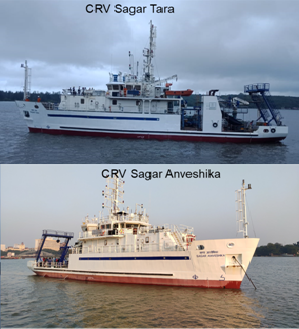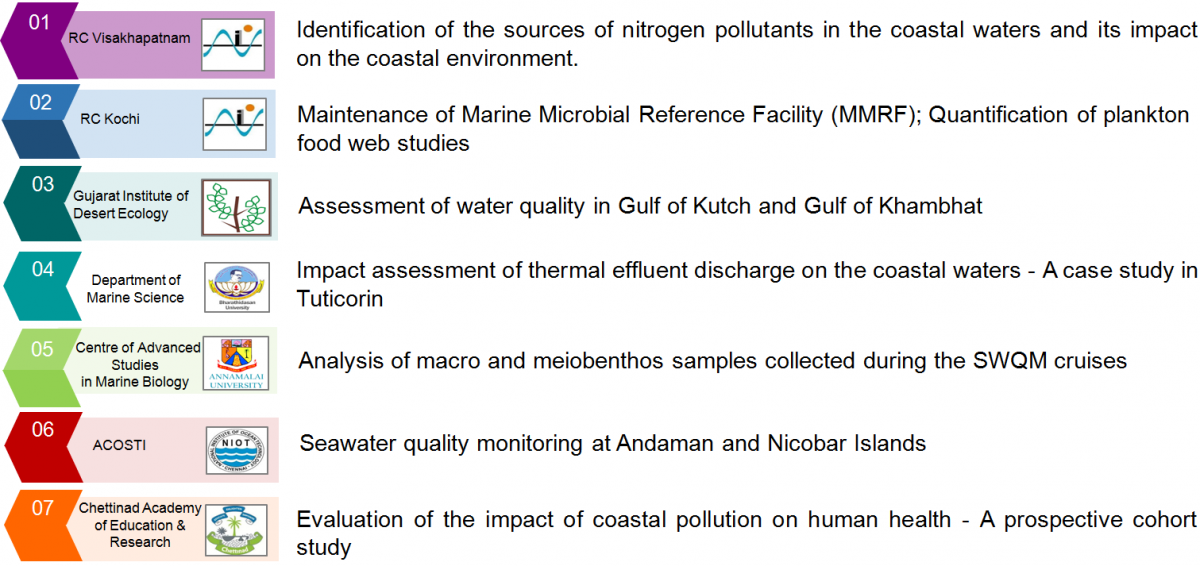Activities
Monitoring -Activities
- The SWQM was established as the Coastal Monitoring and Prediction of Seawater (COMAPS) by the MoES (formerly DOD) in 1990.
- The main objective of the program was to periodically assess the coastal water quality.
- The SWQM program monitors and assesses the coastal water quality through collection of physical, chemical, and biological samples.
- SWQM also provides support to the Coastal Pollution Control Boards (CPCB), State Pollution Control Boards (SPCBs) and Pollution Control Committee (PCCs) for assessing the coastal water.
- Training provided in coastal water quality monitoring to government organizations and research fellows.
Monitoring Strategy
- Monitoring locations : 50
- Number of stations : 1, 2, 3, 5 Km
- Periodicity : Pre- & post- monsoon
- Methodologies : Standard protocols
- Coastal Research Vessels : CRV Sagar Tara & CRV Sagar Anveshika
Sampling Locations
Coastal Research Vessels with State-of-the art facility
Parameters Monitored
Water:
- Temperature, Salinity, pH, DO
- BOD, TSM, TA, DIC, Nutrients
- PHC, Chlorophyll
Plankton:
- Phytoplankton
- Zooplankton
Microbial:
- Total Viable Count, EC, FC, SF, Vibrio sp., Salmonella sp.
Sediment:
- Organic carbon, Texture,
- Trace Metals, PHC
- Benthos
- Microbial:
- Total Viable Count, EC, FC, SF, Vibrio sp., Salmonella sp.
Grant-in-Aid Institutes




